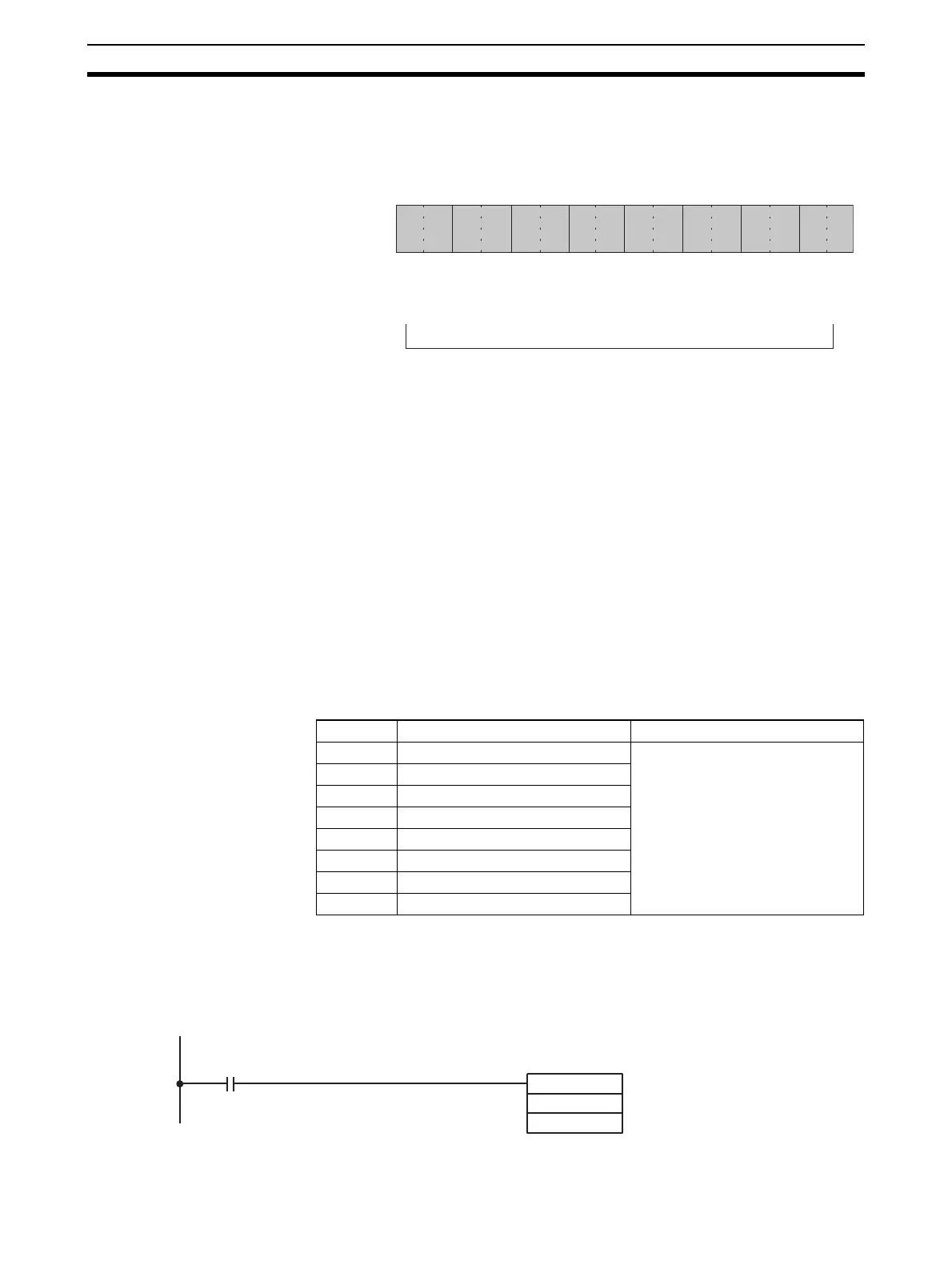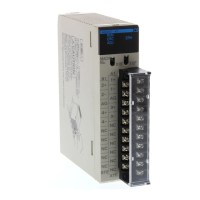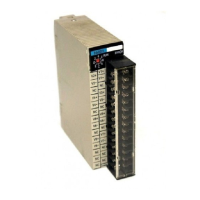150
Analog Output Functions and Operating Procedures Section 4-6
Output Signal Range Any of four types of output signal range (–10 to 10 V, 0 to 10 V, 1 to 5 V/4 to
20 mA, and 0 to 5 V) can be selected for each of the outputs. To specify the
output signal range for each output, use a Programming Device to set the
D(m+1) bits in the DM Area shown in the following diagram.
Note 1. For the DM word addresses, m = D20000 + (unit number x 100).
2. With the CS1W-DA041, the 1 to 5 V output range and the 4 to 20 mA output
range are switched by changing the terminal connections.
3. There is no 4 to 20 mA output range for the CS1W-DA08V.
4. Output setting range settings for the CS1W-DA08C are invalid. The output
signal range will be 4 to 20 mA, regardless of the settings.
5. When data memory settings have been carried out using a Programming
Device, be sure to either turn the power supply for the PLC OFF and then
ON again, or set the Special I/O Unit Restart Bit to ON. The contents of the
data memory settings will be transferred to the Special I/O Unit when the
power is turned ON or the Special I/O Unit Restart Bit is ON.
Writing Set Values Analog output set values are written to CIO words (n+1) to (n+8). For the
CS1W-DA041, they are written to CIO words (n+1) to (n+4).
For the CIO word addresses, n = CIO 2000 + (unit number x 10).
Use MOV(021) or XFER(070) to write values in the user program.
Example 1 In this example, the set value from only one output is written. (The unit num-
ber is 0.)
15 14 13 12 11 10 09 08 07 06 05 04 03 02 01 00
Bit
D(m + 1)
Output 2
Output 1
00: −10 to 10 V
01: 0 to 10 V
10: 1 to 5 V/4 to 20 mA
11: 0 to 5 V
Output 4
Output 3
Output 6
Output 5
Output 8
Output 7
Word Function Stored value
n+1 Output 1 set value 16-bit binary data
n+2 Output 2 set value
n+3 Output 3 set value
n+4 Output 4 set value
n+5 Output 5 set value
n+6 Output 6 set value
n+7 Output 7 set value
n+8 Output 8 set value
MOV (021)
D00001
2001
Input condition
The set value stored in D 00001
is written to CIO word 2001 (out-
put number 1).

